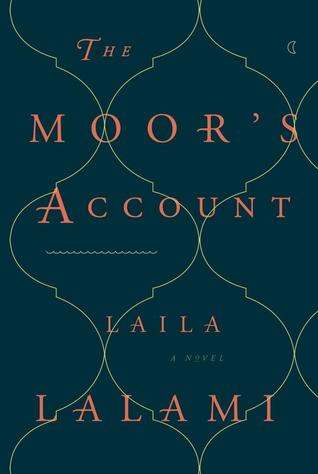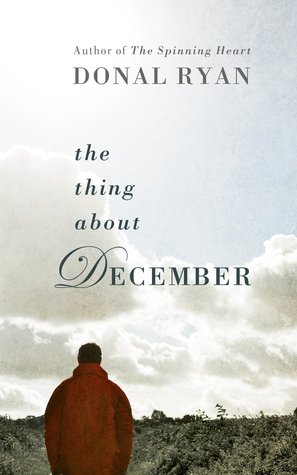Today I welcome Sophie Perinot, whose novel MÉDICIS DAUGHTER has just been published by St. Martin's Press. The novel (which I
reviewed yesterday) recounts the story of Marguerite, the Valois princess who comes of age during the turmoil of the French Wars of Religion. Here, Sophie sheds some light on the writing of the book and the history it portrays.
1. What inspired you to write about Marguerite de Valois and how does your portrayal of her flow from or differ from previous fictional portrayals, be they literary (Alexandre Dumas), film (Patrice Chéreau), or television (Reign)? How difficult was it to work in the shadow of these other depictions?
My desire to explore the Valois court and Marguerite specifically actually originates with Dumas. I am a devotee of this grandfather of historical fiction. I can still remember the first time I read his work and how his ability to write fast-paced compelling stories of adventure and romance captivated me. When I read MARGUERITE DE VALOIS (more popularly known as LA REINE MARGOT) the novel made a special connection. The more times that I re-read it, the more convinced I became that Marguerite deserved a fuller depiction and a more historically based (Dumas was quite open about playing fast and loose with history) exploration. MÉDICIS DAUGHTER is the direct result of that conviction.
Although my desire to tell Margot’s story flows from Dumas, I never felt burdened by him or by any other portrayal of the Valois Court. I never felt in anyone’s shadow. My fiction reflects two primary things: my research and my personal sense of theme and story. So I don’t think of my depiction of the Valois court as competing with Chéreau’s, Dumas’ or anyone else’s. That is one of the wonderful things about historical dramas (whether in books, on TV or in film), they allow each creator to filter and to form—to not just recount history, but to shape narrative in a manner that is meaningful to them personally, as well as to audiences.
I’d like to think my results can stand up to the creations of others though. I recently got a review that thrilled me to the bone when it said: “Dumas's LA REINE MARGOT may have been the first novel to immortalize this indomitable French Queen, but the version of the queen in MÉDICIS DAUGHTER is the most realistic and believable I've yet come across."
2. The relationship between Marguerite and her mother Catherine de Médicis sits at the center of the book--why? What, specifically, about their relationship intrigued you the most?
I chose to focus on the Margot-Catherine relationship because the mother-daughter bond is such a seminal one in the lives of most women. I mean, doesn’t every daughter desire both to please her mother and find a separate existence from that powerful influencer? Margot is certainly no exception. Early on I wrote the following on my desk blotter: “The mother-daughter relationship is always perilous. Now imagine your mother was Catherine de Médicis.” That’s a pretty scary thought—and a very creatively inspiring one!
The most intriguing thing about this particular relationship is that of all Catherine’s children, Margot may have the most like her. Margot was certainly the strongest. Yet despite Margot’s intellect, her strong health and the gift of premonition that she shared with her mother, Catherine never really seemed to like this youngest daughter much. In fact it is reported that Catherine once told Margot she was “born in an evil day."
I came to believe that if Catherine had invested the type of time and energy in Margot that she did in Anjou, the Queen would have been richly rewarded. Even without her mother’s attentions Margot turned out to be a pretty savvy political operator.
3. The Valois, as a waning royal house, was slandered by its political adversaries and suffered a certain degree of prejudice in historical accounts of the time. What measures do you take in your novel to temper this bias? Was it difficult to judge the truthfulness of your historical sources?
I don’t think this problem is limited to situations where there is an overt bias. In fact knowing there was one—that the Valois had many enemies who created contemporary sources with a particular agenda—was helpful because at least then I, as researcher, knew exactly what I was dealing with. Everyone, whether propagandist, memoirist or historian, comes at the “facts” and the “truths” of history with baggage. For many generations objectivity wasn’t even the goal of “H”istorians. Sometimes patronage drove perspective. For example, Catherine de Médicis had favorite chroniclers of the Court (like Brantôme), and you can bet Catherine wasn’t looking for an unbiased account. Sometimes the perspective of a historian is less overtly driven. It may come from their life experiences, opinions or, and this is still true today, from the desire to make a point or intellectual argument that will put him/her into the spotlight in their his/her discipline. So no matter what source we are reading—primary or secondary—it behooves us to be aware of possible filters.
Fortunately as writers of historical fiction (as opposed to academic historians) we are allowed to filter things as well—through our narrative structure, the points-of-view of our characters, etc. Ultimately story drives historical fiction. And author’s notes exist so we can own the decisions and judgments we make in weaving those stories.
4. What insights did you glean into Marguerite or her family from her memoir, published in 1628? Did the existence of this memoir help or hinder you?
I find memoirs fascinating. I mean knowing how someone choses to curate their own life is as interesting as the life itself. That is particularly true when you are writing from a character’s point of view in the first person. I needed to
be Margot, to see the world as Margot saw it. Her memoir was invaluable to me in this.
Margot was not attempting to provide a “just the facts” story of her history in the “letters” that comprise her memoir. By the time she sat down to write of her life, this last-of-the-Valois had very specific needs. She was being held at the Château d’Usson, and, after 1592, the annulment of her marriage to Henri of Navarre, now Henri IV King of France, was under negotiation. So what Margot included and excluded would have been purposeful. She clearly does not include everything she remembered. For example, she claims to have no recollection of much of the court’s Grand Progress in the 1560s—a claim that is hardly credible given that the trip lasted more than two years and involved the sort of sights and events that would surely have impacted an impressionable young woman. In addition, many of the key players from the early years of her life were dead. Margot had the opportunity to portray them without rebuttal. Yet in a number of cases she was quite charitable. For example, Margot called her brother Charles “the only stay and support of my life; a brother from whose hands I never received anything but good.” That is absolutely revisionist history. Trust me. So Margot’s decisions in constructing her memoir illuminated not only her actions and the actions of those around her but her thought process and political judgments. They gave me something that no secondary source could have.

5. Which scene was the most difficult to write? Which scene was the most fun to concoct?
My novel includes the infamous and bloody Saint Bartholomew’s Day Massacre. In many ways those scenes were the most difficult to craft. Not because of the violence—but because we are a society that has largely become insensible to violence. I ultimately decided that the best way to convey the horror and despair that the massacre must have inspired in someone of conscience witnessing it first hand was to keep my images small and personal. Margot is encountering slaughter in the halls of the palace she calls home. She is observing it at close range, involving individuals she recognizes—people she has dined with, perhaps even danced with—in the roles of both victims and perpetrators. I think sometimes in most overwhelming moments of our lives we become focused, even fixated, on very small details. We remember what was on the radio the day we took the call saying someone we cared for had been killed in an accident for example. So I worked hard to distill Margot’s experiences, especially the next day when she is forced to ride out into the streets while they are still choked with the bodies of the dead.
When it came to fun, nothing beat the scenes between Margot and her cousin Henri of Navarre. They are so wrong together, such opposites, that something very right comes of it. There is always repartee when they are together. And later there is camaraderie, a chemistry touched by exasperation, which I really enjoyed.
6. If you could write a novel about one of the other characters in the book, who would you choose and why?
The Valois court offers an embarrassment of riches—so many fascinating individuals and so many years of violence and conflict yet to come. I’d love to write more about the entire cast of characters. If I did a sequel to MÉDICIS DAUGHTER, the POV I’d
most like to add would be Margot’s cousin/husband, Henri of Navarre. Henri’s philosophy and perspective is so very different than that of his wife that he would add a marvelous counterpoint. But why stop at two voices? A royal court is an ensemble cast waiting to take the stage, so if I approached the Valois again it would be a riot to do TV mini-series style treatment—multiple points of view, serpentine subplots.
********
Sophie Perinot is the author of THE SISTER QUEENS and one of six contributing authors of A DAY OF FIRE: A NOVEL OF POMPEII. A former attorney, Perinot is now a full-time writer. She lives in Great Falls, Virginia with her three children, three cats, one dog and one husband.
An active member of the Historical Novel Society, Sophie has attended all of the group's North American Conferences and served as a panelist multiple times. Find her among the literary Twitterati as
@Lit_gal or on
Facebook.






















































